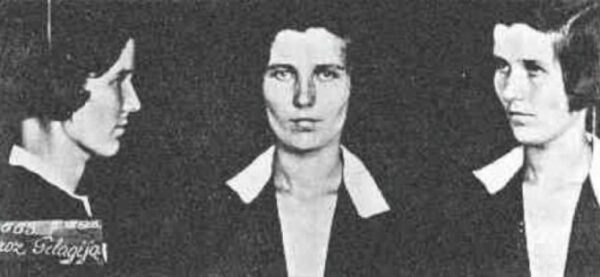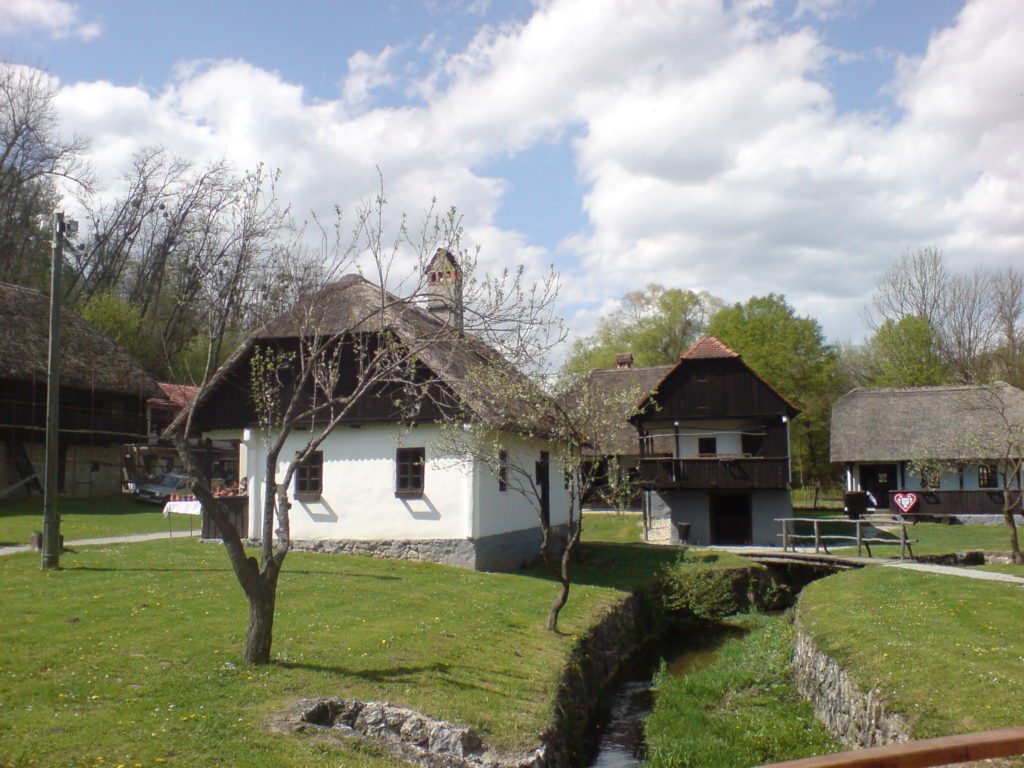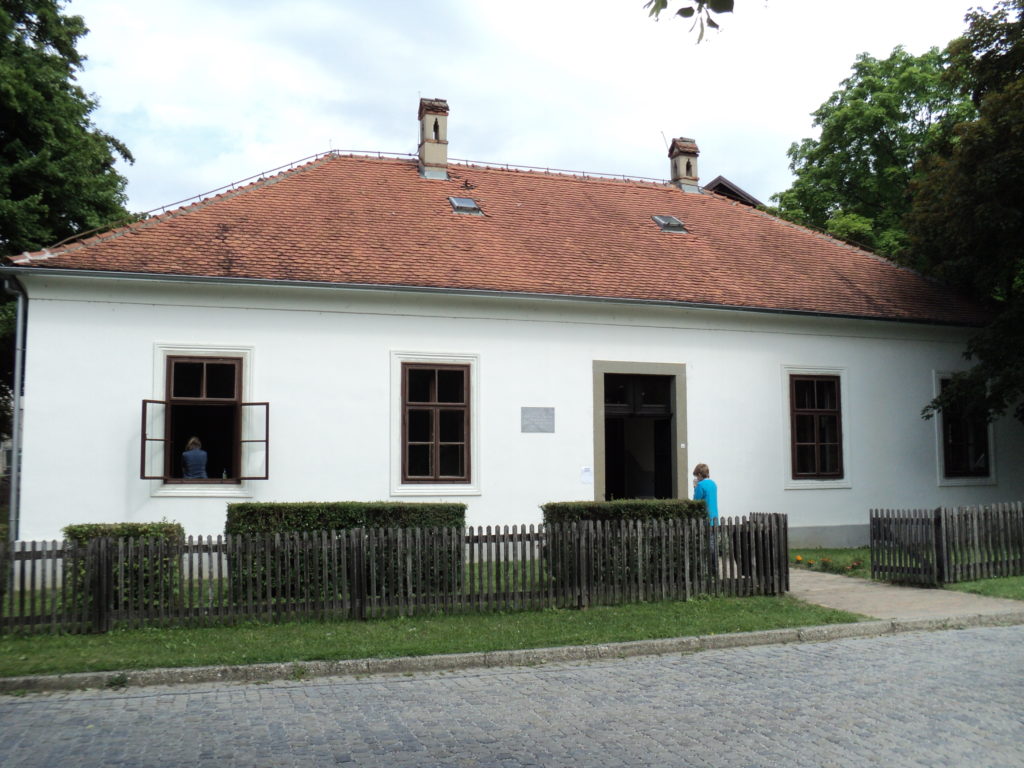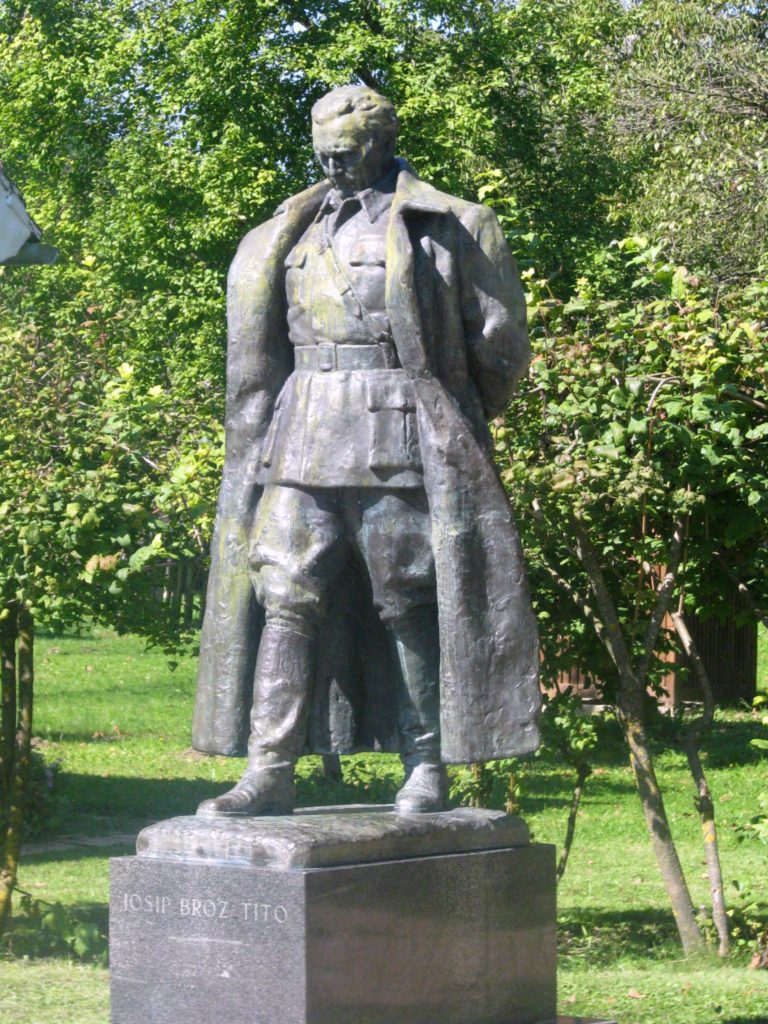Military Service.
When we left Josip Broz, he had completed his locksmithing apprenticeship, joined the Metal Workers’ Union, and the Social-Democratic Party of Croatia and Slavonia. Then, at age 21, he was conscripted into the Austro-Hungarian Army where he served in the 25th Croatian Home Guard Regiment which was stationed in Zagreb. He became a champion fencer, learned to ski, and was sent to a school for non-commissioned officers where he became the youngest sergeant-major in his regiment and possibly the youngest in that army.
With his unit marching toward the Serbian border shortly after the start of World War I, Broz was arrested and charged with sedition. (The circumstances that gave rise to this charge are unclear. Tito himself offered differing retellings.) He was quickly acquitted and released but early in 1915, his regiment was serving along the eastern front in Galicia where he was severely wounded, taken as a prisoner of war, and transferred to several POW camps.
In June 1917 Broz walked out of an unguarded POW camp and hid aboard a freight train bound for Saint Petersburg (then Petrograd) where he stayed with the son of a Bolshevik he had met in one of those camps. After a series of other escapes and arrests (including an ill-fated attempt to reach the United States), a now 25-year-old Broz found himself in Omsk where he met and fell in love with a local 14-year-old girl Pelagija “Polka” Belousova.

Josip again got himself in trouble and Polka helped him escape. In November 1919, the Red Army drove the White Army forces loyal to Alexander Kolchak from Omsk opening space and time for Broz and Belousova to marry. By the autumn of 1920 when Broz and his now pregnant wife (our Kumrovec guide Mateija told us she was pregnant before the ceremony) returned to Kumrovec in what was now the Kingdom of Serbs, Croats and Slovenes, his mother had died and his father had moved to Jastrebarsko a town near Zagreb.
In the period between the two World Wars, Broz joined the Communist Party of Yugoslavia (KPJ). When a member of the party assassinated the Minister of the Interior in 1921, the authorities declared the KPJ illegal later in that year. Because of his active affiliation with the KPJ Broz was often without work. He was arrested for illegal communist activity for the first time in 1924 but was acquitted at trial. He would be arrested and convicted later in the 1920s but escaped before serving a four-month prison sentence.
In mid-1925, the owner of the mill where he worked gave Broz an ultimatum to quit the KPJ or lose his job. Thus it was that at age 33 with a newborn son (who would be the first of his children to survive past the age of two), Broz became a professional agitator.
This agitation extended even within the KPJ where he engineered the ouster of party leader Sima Marković who advocated the policy of a Greater Serbia – a policy the Croat-Slovene Broz opposed. The KPJ eventually adopted a policy of working for the break-up of Yugoslavia. Broz was arrested in November 1928 for his illegal communist activities and sentenced to five years in prison.
He served out his term but was arrested immediately on his release and forced to serve the four-month term he had previously avoided. His final release in March 1934 required him to live in Kumrovec and report to the police daily. Pelagija had earlier returned to Kumrovec with their son Žarko but by the time Josip was released, she had taken Žarko back to her native Russia.
Meanwhile, Broz didn’t stop his communist activities and it was at this time that he adopted the moniker Tito as a sort of nom de guerre.
(Our group leader Damir told us that the etymology of the name Tito is from a Croatian phrase “ti to navrati” meaning you do it. Whether this is truly related to Broz’s adoption of it or is something of an urban legend is certainly open to question. Here is Tito’s explanation [cited on Wikipedia’s Tito page as from the book Tito Speaks by Vladimir Dedijer]:
It was a rule in the Party in those times not to use one’s real name, in order to reduce the chances of exposure. For instance, if someone working with me was arrested, and flogged into revealing my real name, the police would easily trace me. But the police never knew the real person hiding behind an assumed name, such as I had in the Party. Naturally, even the assumed names often had to be changed. Even before going to prison I had taken the name of Gligorijević, and of Zagorac, meaning the ‘man from Zagorje’. I even signed a few newspaper articles with the second.
Now I had to take a new name. I adopted first the name of Rudi, but another comrade had the same name and so I was obliged to change it, adopting the name Tito. I hardly ever used Tito at first; I assumed it exclusively in 1938, when I began to sign articles with it. Why did I take this name ‘Tito’ and has it special significance? I took it as I would have any other, because it occurred to me at the moment. Apart from that, this name is quite frequent in my native district. The best-known Zagorje writer of the late eighteenth century was called Tito Brezovački; his witty comedies are still given in the Croatian theatre after more than a hundred years. The father of Ksaver Šandor Gjalski, one of the greatest Croatian writers, was also called Tito.)
He found a place on the Central Committee of the KPJ and began staffing it with his allies and supporters. By 1937, Tito was appointed Secretary-General of the still outlawed KPJ.
Kumrovec – More than just a Ti-to party.
Because you’ve probably had as much Tito as you can drink in one sitting and, frankly, because I can use a break from writing about him, let’s take a bit of a look around Kumrovec courtesy of various websites.
Let me note here that even if I still had my photos, I wouldn’t have any of the interior of Tito’s home. You see, some of the streams, such as the one in the photo above, run through the town. Shortly before we arrived unusually heavy rains had caused some minor flooding. Some of that water reached Tito’s homestead resulting in its temporary closure. We did, however, get to walk through and peer into some other typical homes such as the one in the next photo.
I mentioned that despite failing the second grade, Tito was, according to our guide Mateija, the first in his family to be literate. This was his schoolhouse:
If you look at the photo of Tito’s home, you can see a statue between the house and the barn. Here’s a closer look.
Our group leader Damir gathered us together near the statue and began to tell us a story. Like most communist or socialist countries, Yugoslavia had a government sponsored youth organization. In Croatian it was called “Savez pionira Jugoslavije” or the Union of Pioneers of Yugoslavia. Damir was (as was Mateija) among the last children to be enrolled in the pioniri as he called it.
The Pioniri wore uniforms that Damir described as consisting of red scarves and navy-blue hats. Both boys and girls wore white shirts and the boys usually wore navy-blue shorts or pants while the girls wore navy-blue skirts with white stockings and black shoes.
Because he lives in Zagreb, he had stopped by his flat while we were there and brought with him his scarf and hat. I tried it on and he administered the Pioneer’s oath:
Today, as I become a Pioneer, I give my Pioneer’s word of honor:
That I shall study and work diligently, respect parents and my seniors, and be a loyal and honest comrade/friend.
That I shall love our homeland, self-managed Socialist Federal Republic of Yugoslavia.
That I shall spread brotherhood and unity and the principles for which comrade Tito fought.
And that I shall value all peoples of the world who respect freedom and peace!
(No, I didn’t remember it! It’s from the Wikipedia page.)
You can rest now but there’s more Tito biography to come. Before I wrap up the events of the day another post, I’ll take a look at how Tito stirred things up as the leader of the Partisans in World War II and used that as his launch pad to become the leader of Yugoslavia from the end of the war until his death in 1980.



